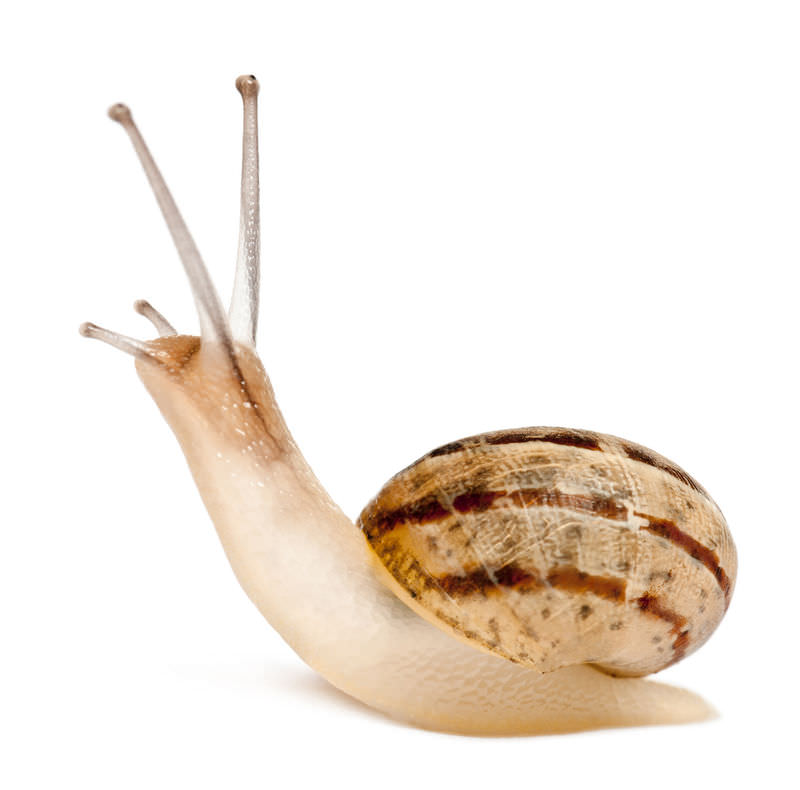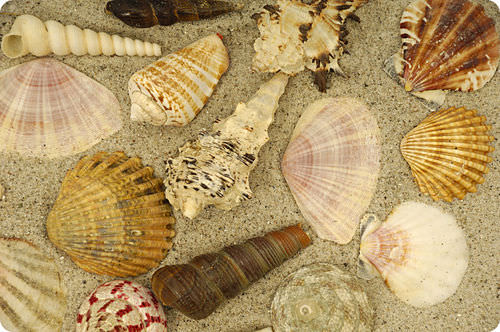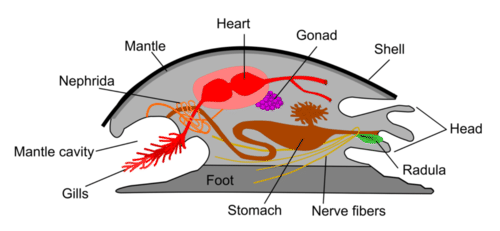9.7: Mollusks
- Page ID
- 13893

What does this snail have in common with a clam?
You might notice that both have a shell. That is one feature of the group they both belong to, the mollusks. Mollusks are a very diverse group. They include animals that live on land and in the ocean. With well over 100,000 species, there can be a lot of shells.
What are Mollusks?
When you take a walk along a beach, what do you find there? Sand, the ocean, lots of sunlight. You may also find shells. The shells you find are most likely left by organisms in the phylum Mollusca. On the beach, you can find the shells of many different mollusks (Figure below), including clams, mussels, scallops, oysters, and snails. Mollusks are invertebrates that usually have a hard shell, a mantle, and a radula. Their glossy pearls, mother of pearl, and abalone shells are like pieces of jewelry. Some mollusks, such as squid and octopus, do not have shells.

Features of the Mollusk
The Mollusk's body is often divided into different parts (Figure below):
- A head with eyes or tentacles.
- In most species, a muscular foot, which helps the mollusk move. Some mollusks use the foot for burrowing into the sand, and others use it for jet-propulsion.
- A mantle, or fold of the outer skin lining the shell. The mantle often releases calcium carbonate, which creates an external shell, just like the ones you find on the beach. The shell is made of chitin, a tough, semitransparent substance.
- A mass housing the organs.
- A complete digestive tract that begins at the mouth and runs to the anus.
- Most ocean mollusks have a gill or gills to absorb oxygen from the water.
- Many species have a feeding structure, the radula, found only in mollusks. The radula can be thought of as a "tongue-like" structure. The radula is made mostly of chitin. Types of radulae range from structures used to scrape algae off of rocks to the beaks of squid and octopuses.

Evolution of Mollusks
Mollusks are probably most closely related to organisms in the phylum Annelida, also known as segmented worms. This phylum includes the earthworm and leech. Scientists believe these two groups are related because, when they are in the early stage of development, they look very similar. Mollusks also share features of their organ systems with segmented worms. Unlike segmented worms, however, mollusks do not have body segmentation. The basic mollusk body shape is usually quite different as well.
Summary
- The mollusk body often has a head with tentacles, a muscular foot, a feeding organ called the radula, and a complete digestive tract.
- Mollusks have a mantle, which often secretes an external shell.
- Mollusks are most closely related to segmented worms.
Explore More
Use the resource below to answer the questions that follow.
- Molluscs: The Survival Game at vimeo.com/37325960 (15:08)
- How does the shell of the leafy hornmouth (Ceratostoma foliatum) help it against crushing predators?
- For what purpose do cockles use their foot?
- How and why do the radula of different mollusks vary?
- For what purpose has the nautilus adapted its foot?
- What change in predatory fish behavior seems to have led to a squid body plan being advantageous over a nautiliod body plan?
Review
- What is a mollusk?
- Give three examples of mollusks.
- Describe three main characteristics of mollusks?
- What evidence shows that mollusks and segmented worms are related? How are they different?

